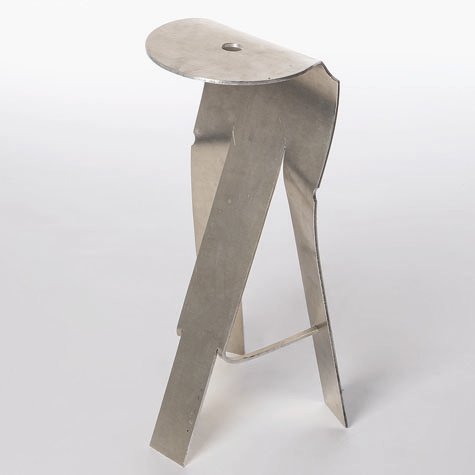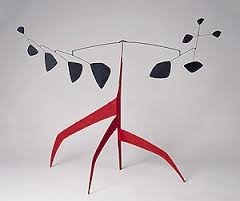During months, Adi Hamer accompanied Yaakov Kaufman on his selection and cataloging process, towards the exhibition “Stools”.
Inroduction / Other Stools Stories:






During the last two months, Adi Hamer accompanied Yaakov Kaufman on his selection and cataloging process, towards the exhibition “Stools” that will open in the museum next week. The many hours she spent with the stools made it possible for her to acquaint herself with the stools and witness their every nuance. What at first seemed like a vast millipede horde slowly turned into singular stools, single sons. Within the next few weeks we will showcase a single stool every couple of days. We will focus on each stool and unfold its narrative.

Calder LegsOne of the striking influences in Kaufman’s structural studies, which is expressed in his stools, comes from American sculptor Alexander Calder (1898-1976). Calder belonged to the kinetic art movement which engaged in the movement and development – real or imaginary – of shapes in space over time. He is also known as the originator of the artistic mobile in 1931.

Calder initially trained as a mechanical engineer, and began building motorized mobiles before he emerged as an artist. When he began engaging in sculpting in 1937 it was on a small scale, but quite quickly evolved into bigger and stronger models whose movement was based on wind.
Many of Calder’s sculptures are based on bent steel that transforms them into stable three-dimensional structures. The shapes are amorphous, and their outlines look as though they were drawn by a child. One flat leg that transforms into three stable ones that only barely touch the ground – is one of Calder’s prominent structures. This structure is expressed in several of Kaufman’s stools, but with Kaufmanesque touches: at times the strip of material continues to the seat of the stool, and in one case the legs are stuck into a central wood cylinder.
Calder’s method of creating a three-dimensional structure enables him to construct legs relatively fast and from flat material that does not require extensive processing. The resulting stool possesses a surprising esthetic that from certain angles almost seems to be hovering in midair.



Inroduction / Other Stools Stories:







